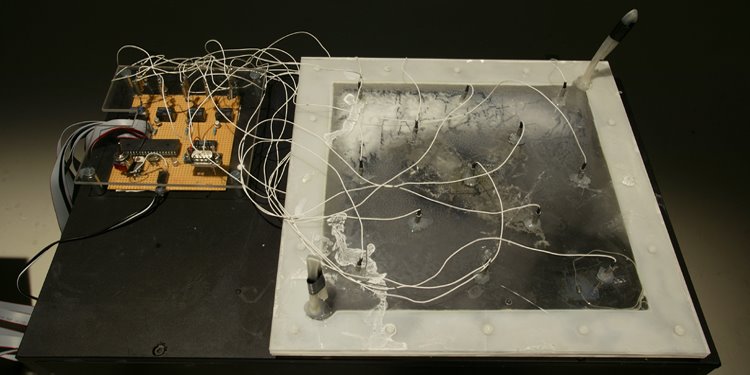[...]
Today “criticality” is under attack, seen by its critics as obsolete, as irrelevant, and/or as inhibiting design creativity. What is more, the criticisms that are increasingly frequently being made come from an interesting diversity of sources. To start to make sense of this emergent situation, we might try to locate the beginnings of the evident shift of opinion against this once-so-dominant theoretical discourse in architecture. One interesting precursor of current comment was an outburst by Rem Koolhaas at one of the series of conferences organized by ANY magazine, this one at the Canadian Centre for Architecture in 1994: “The problem with the prevailing discourse of architectural criticism,” complained Koolhaas, “is [the] inability to recognize there is in the deepest motivations of architecture something that cannot be critical.”(2) But if Koolhaas' complaint was a harbinger of things to come, probably the first frontal challenge to criticality was a text published by Michael Speaks, the Director of Graduate Studies at Southern California Institute of Architecture, in the American magazine Architectural Record in 2002.(3) In a startlingly revisionist text, Speaks explicitly abandoned the “resistance” that he had learned from his own teacher, Fredric Jameson, in favor of a model of a new, alternative, and efficaciously integrated architecture that would take its cues from contemporary business management practices.
from “Criticality” and Its Discontents by George Baird
Available here.
Research and Practice explores practice-based research in art, craft and design.
RECOMMENDED READING
- Allen, Stan. Practice: Architecture, Technique and Representation. Amsterdam: G+B Arts International, 2000.
- Balkema Anette and Slager, Henk: Artistic Research, Special volume of Lier & Boog Series of Philosophy of Art and Art Theory, vol. 18, Amsterdam 2004.
- Bibliography on supervision, research training, and research in art and design
- Biggs, M. (2004) "Learning from Experience: approaches to the experiential component of practice-based research" in: Forskning, Reflektion, Utveckling. Stockholm, Vetenskapsrådet, 6-21.
- Biggs, Michael. Foundations of practice-based research: proceedings of the research into practice conference
- Buchanan, R. “Declaration by Design: Rhetoric, Argument, and Demonstration in Design Practice” in Margolin, Victor ed. (1989) Design Discourse: History, Theory, Criticism (Chicago and London: University of Chicago Press).
- Buchanan, Richard. "Rhetoric, Humanism, and Design." In Discovering Design: Explorations in Design Studies, edited by Richard Buchanan and Victor Margolin, 23-68. Chicago: University of Chicago Press, 1995.
- Chenail, Ronald J. “But is it research?”
- Churchman C. W. (1971) The Design of Inquiring Systems: Basic Concepts of Systems and Organization. New York: Basic Books Inc.
- Cross, Nigel. "Design Research: A Disciplined Conversation." Design Issues 15, no. 2 (Summer 1999): 5-10.
- Cross, Nigel. "Discovering Design Ability." In Discovering Design, edited by Richard Buchanan and Victor Margolin, 105-120. Chicago: University of Chicago Press, 1995.
- Frayling, Christopher. "Research in Art and Design." Royal College of Art Research Papers 1, no. 1 (1993-4): 1-5.
- Hanulla, Mika, Suoranta, Juha & Vadén, Tere. Artistic Research – theories, methods and practices, Art Monitor, Gothenburg 2005. “Introduction”, p. 9-22 and “Artistic Research in Practice”, p. 109-118
- Hughes, Rolf. "Experience and Communication" in Reflections 7 (Brussels: Sint-Lucas School of Architecture, 2007)
- Hughes, Rolf. "The Art of Displacement: Designing Experiential Systems and Transverse Epistemologies as Conceptual Criticism." In Footprint Issue # 4, Spring 2009, Agency in Architecture: Reframing Criticality in Theory and Practice
- Klein, J. T. (2004) “Interdisciplinarity and complexity: An evolving relationship” E:CO Special Double Issue Vol. 6 Nos. 1-2.
- Kuhn, T. S. (1970) The Structure of Scientific Revolutions, 2nd. ed., Chicago: Univ. of Chicago Press.
- Leavy, P. (2009). Method meets art: Arts-based research practice. New York: Guilford Press.
- Mazé, Ramia, and Johan Redström. "Difficult Forms: Critical Practices in Design and Research." In Proceedings of the conference of the International Association of Societies of Design Research. Hong Kong: IASDR, 2007.
- Mazé, Ramia. Occupying Time: Design, Technology and the Form of Interaction. Stockholm: Axl Books, 2007.
- Mäkelä, Maarit and Routarinne, Sara, eds. The art of research : research practices in art and design. Helsinki, Finland: UIAH, 2006.
- Ryle, G. (1949) The Concept of Mind. Harmondsworth: Penguin Books.
- Schön, D. (1981) The Reflective Practitioner. New York: Jossey-Bass.
- Shales, Ezra: “Technophilic Craft”, American Craft Magazine, April/May 2008.
- Simons, H. W., ed. (1990) The Rhetorical Turn: Invention and Persuasion in the Conduct of Inquiry (Chicago and London: University of Chicago Press)
- Talkin' Loud and Sayin' Something (catalogue)
Dendritic computer

by Pablo Miranda and Arijana Kajfes
Vannevar Bush, As we May Think (1945)
The difficulty seems to be, not so much that we publish unduly in view of the extent and variety of present day interests, but rather that publication has been extended far beyond our present ability to make real use of the record. The summation of human experience is being expanded at a prodigious rate, and the means we use for threading through the consequent maze to the momentarily important item is the same as was used in the days of square-rigged ships.
But there are signs of a change as new and powerful instrumentalities come into use...
But there are signs of a change as new and powerful instrumentalities come into use...
Blog Archive
-
▼
2006
(16)
-
▼
May
(11)
- “Criticality” and Its Discontents
- In Chicago, Leonardo the Inventor and Decoder
- Winterhouse Writing Awards for Design Writing & Cr...
- Winterhouse Studio/Design Observer
- Nordcode
- Diaries and Fieldnotes in the Research Process
- Michael Biggs, "The Rhetoric of Research"
- Working Papers in Art and Design Research
- Centre for Research into Practice
- Royal College of Arts Research Methods
- Designing and Managing a Research Project
-
▼
May
(11)
Links
About Me
- Rolf Hughes
- Writer & critic; Guest Professor in Theory and Practice-Based Research at the Department of Interdisciplinary Studies at Konstfack University College of Arts, Crafts and Design, Stockholm; Senior Professor in Research Design at the Sint-Lucas School of Architecture, Brussels & Ghent; Senior Researcher at the Royal Institute of Technology, School of Architecture, Stockholm.